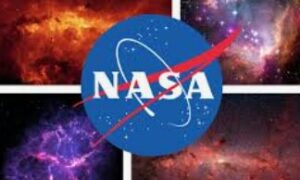A day after it announced the launch date for the Chandrayaan-2 mission, the Indian Space Research Organisation (ISRO) said on Thursday it intended to build a permanent station in space in the next five to seven years. It seems to be a logical step forward, after the exploratory missions to the Moon (Chandrayaan -1) and Mars (Mangalyaan), the upcoming Lander and Rover mission to Moon (Chandrayaan-2), the declared human space flight before 2022 (Gaganyaan), and a possible, still undeclared, human mission to the Moon sometime later.
With these missions, ISRO has also been signalling a distinct change in its priorities — henceforth, it would be an agency engaged mainly in space and inter-planetary exploration, while other ventures like commercial satellite launches would only be secondary activities. Much would, however, depend on the success of Chandrayaan-2 and Gaganyaan.
Chandrayaan-2
ISRO has now said Chandrayaan-2 will be launched on July 15, and its lander and rover would touch down on the moon’s surface on September 6.
A natural sequel to Chandrayaan-1, an Orbiter mission launched in October 2008, Chandrayaan-2 has taken a long way coming. It was originally scheduled to be launched in 2012, but at that time the lander module was supposed to come from Russian space agency Roskosmos. The Russians, however, withdrew after their similarly designed lander for another mission developed problems in 2011. That left it on ISRO to design, develop and build the lander on its own, which has taken a few years.
Now, it is expected to produce much more science than Chandrayaan-1 could. Chandrayaan-1, ISRO’s first exploratory mission to moon, was designed to just orbit the Moon and make observations with instruments on board. The closest the spacecraft came was in an orbit 100 km from the Moon surface.
For largely symbolic reasons, though, the Chandrayaan-1 mission did send one of its instruments, called Moon Impact Probe, or MIP, a 35-kg cube-shaped module with the Indian tricolour on all its sides, to crash-land on the Moon’s surface. ISRO later claimed data sent by MIP on its way to the Moon had shown evidence of presence of water, but it could not publish those findings because of anomalies in calibration.
The confirmation for water had come through studies on data produced by another instrument onboard the Chandrayaan-1 spacecraft, the M3 or Moon Mineralogy Mapper, that had been put by NASA.
Chandrayaan-2 consists of an Orbiter, Lander and Rover, all equipped with scientific instruments to study the moon. The Orbiter will once again orbit from 100 km away, while the Lander and Rover modules will separate and make a soft-landing on the surface. ISRO has named the Lander module Vikram, after Vikram Sarabhai, and the Rover module Pragyaan, meaning wisdom.




























 WhatsApp us
WhatsApp us